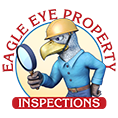AboutMOLD INSPECTION
Mold Inspections By Eagle Eye, Certified and InsuredMold Inspections By Eagle Eye, Certified and Insured
If you are one of the growing number of people opting to buy a condo, you should not consider the buying process any different than if you are buying a single family home, especially when it comes to the home inspection. Condo inspections are not to be considered as something of lesser value or need, simply because the property may be smaller in size or because some of the major components of the property and structure are handled by the homeowners association.
Molds or mildew are part of the fungi kingdom. There are about 100,000 species of fungi the have been identified and there appears to be many more to be discovered. Unlike plants, molds do not receive their energy from the sun, but in fact the sun’s ultraviolet light inhibits mold growth. Mold digests or eats the material it grows on. The purpose of mold is to break down decaying organic matter such as dead plants, leaves and animals.
To set the record straight, not all mold are toxic. Matter of fact the term toxic is not accurate. While certain molds are toxigenic and can produce toxins, it is important to note that the mold itself is not toxic. There is always a little mold everywhere whether in the air or on many surfaces.
Now you may ask yourself, how do molds affect people? The truth is that some people are more sensitive to mold than others. For people that are sensitive to mold exposure, symptoms such as eye irritation, wheeziness, nasal stuffiness, or skin irritation may be a recurring thing without them even knowing that is due to their exposure to mold. In 2004 the Institute of Medicine (IOM) found there was sufficient evidence to link indoor exposure to mold with upper respiratory tract symptoms, cough, and wheeze in otherwise healthy people; with asthma symptoms in people with asthma; and with hypersensitivity pneumonitis in individuals susceptible to that immune-mediated condition. The IOM also found limited or suggestive evidence linking indoor mold exposure and respiratory illness in otherwise healthy children. Other recent studies have suggested a potential link of early mold exposure to development of asthma in some children, and that selected interventions that improve housing conditions can reduce morbidity from asthma and respiratory allergies.
Eagle Eye provides the service necessary to detect, test and report on the pretense of mold and types of mold(s) in a property. Our technicians are experienced Indoor Air Consultants with the tools and skills necessary to assist clients in their quest to detect evidence of mold presence in their homes or buildings. There can be different ways to perform a mold inspection/evaluation analysis. Mold inspections are as follows,

